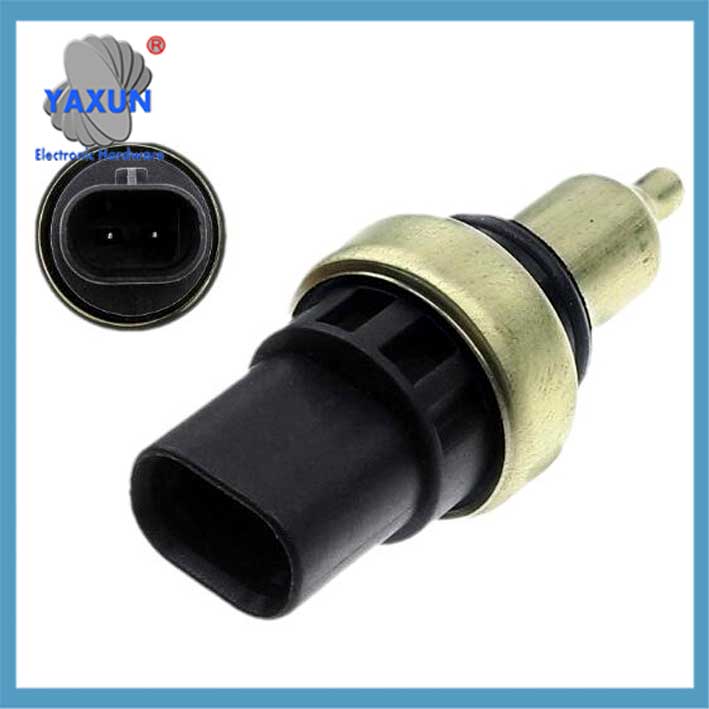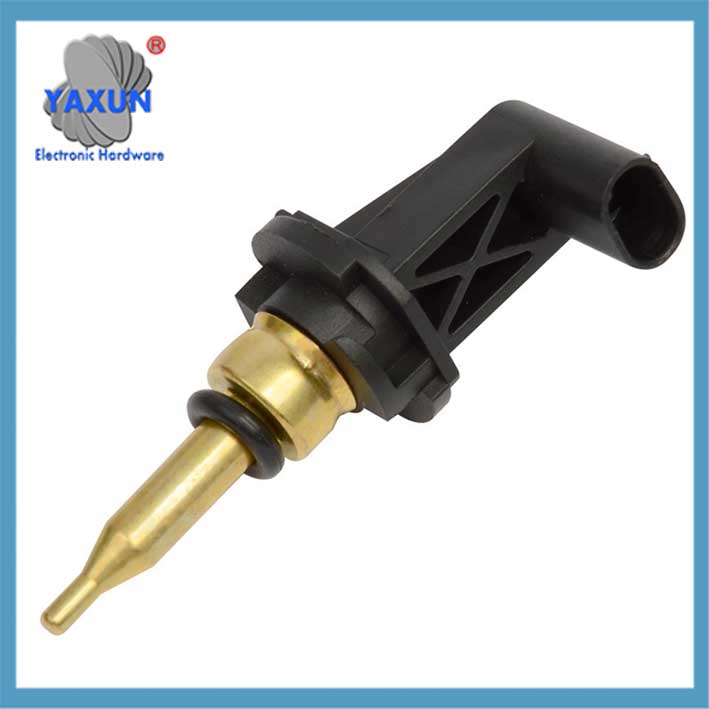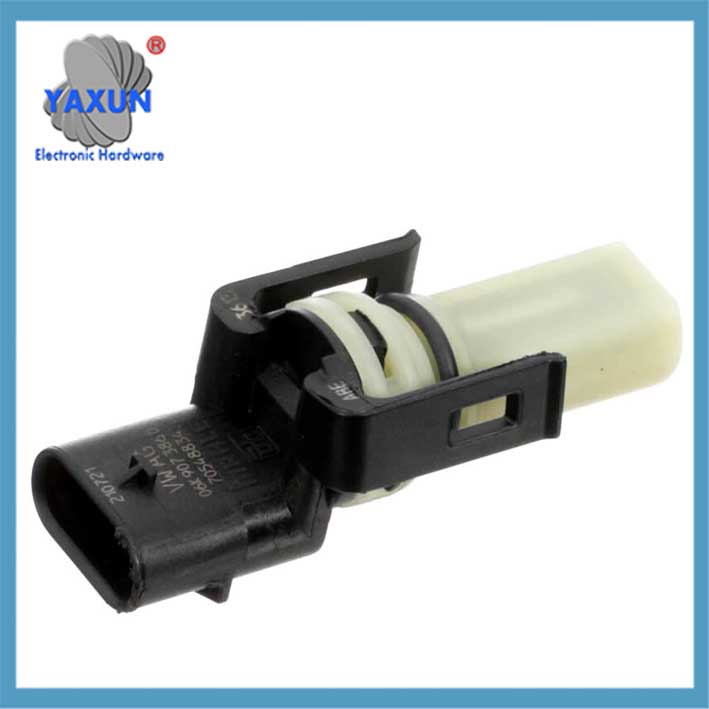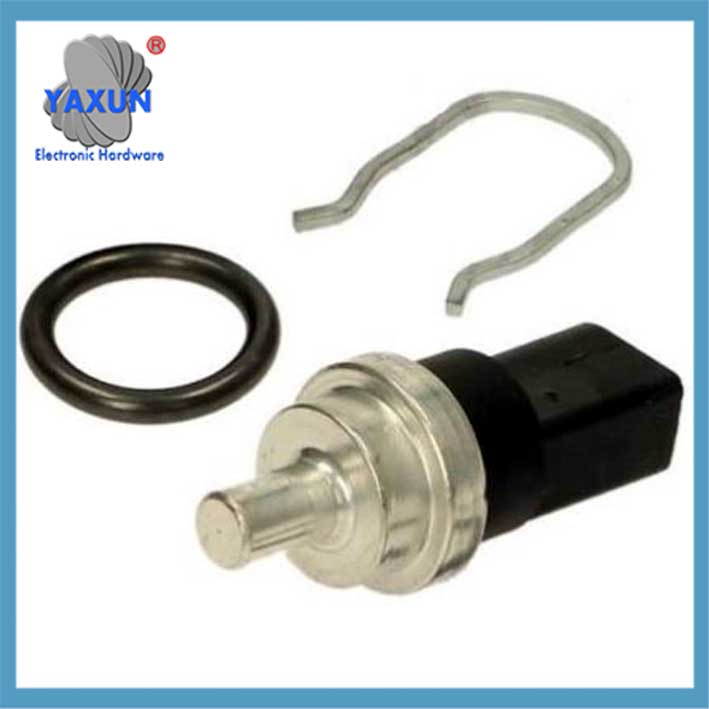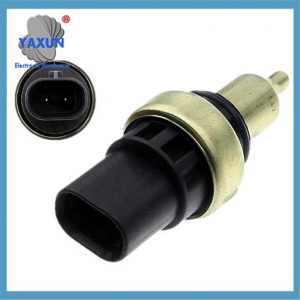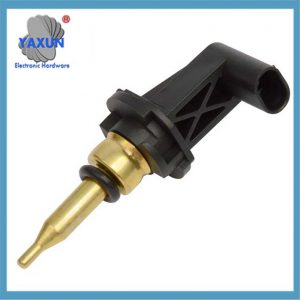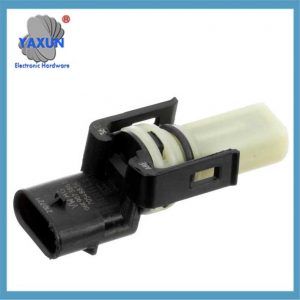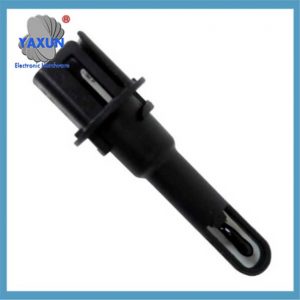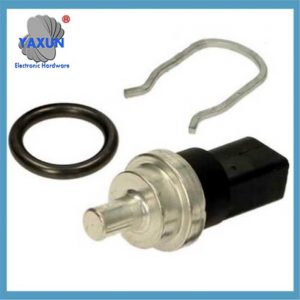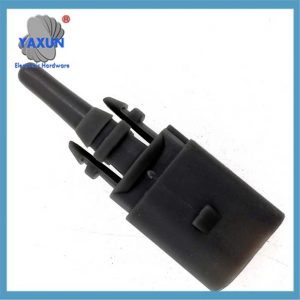فئات المنتجات
- الصمامات الحرارية 32
- الصمامات جبل السطح 12
- الثرمستور 36
- حامل فيوز جبل ثنائي الفينيل متعدد الكلور 27
- تسخير الأسلاك 6
- أصحاب الصمامات بليد 17
- ترموستات 50
- الصمامات الكهربائية 24
- مستشعر درجة حرارة السيارات 7
- قاطع الدائرة الحرارية 22
- حامل صندوق الصمامات 36
- مستشعر درجة الحرارة 75
- التبديل الحراري 68
- فيوز السيارة 20
- بولت داون فيوز 8
علامات المنتج
وظائف وتصنيف أجهزة استشعار درجة الحرارة في السيارات
يعد مستشعر درجة حرارة السيارة هو المكون الأساسي لنظام الإدارة الحرارية للمركبة ( مستشعر درجة حرارة سائل التبريد, مستشعر درجة حرارة الهواء الداخل, حساس درجة حرارة زيت ناقل الحركة, مستشعر درجة الحرارة الخارجية / الداخلية), والذي يوفر البيانات الأساسية لوحدة التحكم في المحرك (وحدة نقدية أوروبية) لتحسين أداء السيارة من خلال مراقبة التغيرات في درجات الحرارة في مناطق مختلفة. التصنيفات والوظائف الرئيسية هي كما يلي:
تستخدم أجهزة استشعار درجة الحرارة على نطاق واسع في السيارات, مثل أجهزة استشعار درجة حرارة سائل التبريد (مستشعرات درجة حرارة الماء), أجهزة استشعار درجة حرارة السحب, أجهزة استشعار درجة حرارة زيت ناقل الحركة, إلخ. وتتمثل الوظيفة الرئيسية لهذه المستشعرات في مراقبة درجة حرارة الأجزاء المختلفة وإرسال البيانات إلى وحدة التحكم الإلكترونية لضبط معلمات التشغيل للمحرك وأنظمة السيارة.
الشيء التالي الذي يجب مراعاته هو نوع المستشعر ومبدأ عمله. شائعة الاستخدام هي الثرمستورات ذات معامل درجة الحرارة السلبية (المجلس الوطني الانتقالي), المزدوجات الحرارية, أجهزة كشف المقاومة البلاتينية (الحق في التنمية), إلخ. فيما بينها, NTC هو الأكثر استخدامًا. على سبيل المثال, يستخدم مستشعر درجة حرارة الماء خاصية أن مقاومة NTC تتناقص مع زيادة درجة الحرارة. يتم استخدام أجهزة الاستشعار القائمة على السيليكون مثل KTY84 في المناسبات ذات الدقة العالية, مثل الكشف عن درجة حرارة الزيت. نطاق القياس ودقة أجهزة الاستشعار المختلفة لها خصائصها الخاصة. على سبيل المثال, المزدوجات الحرارية مناسبة لبيئات درجة الحرارة المرتفعة, لكن الدقة منخفضة; تتميز أجهزة كشف مقاومة البلاتين بدقة عالية ولكن بتكلفة عالية.
موقع التثبيت مهم أيضًا. على سبيل المثال, عادةً ما يكون مستشعر درجة حرارة الماء بالقرب من الغلاف المائي لكتلة المحرك أو رأس الأسطوانة, while the intake temperature sensor is in the intake pipe or air flow meter. The location of the external temperature sensor varies, some are in the front bumper, some are near the water tank, and the difference between different models is large. The choice of these locations directly affects the accuracy of the measurement and the durability of the sensor.
In terms of function, the temperature sensor has a great impact on vehicle performance. Abnormal water temperature sensors can cause problems such as difficult cold starts, سرعة الخمول غير المستقرة, and increased fuel consumption. Failure of the intake temperature sensor may cause an imbalance in the mixture ratio and affect power output. These failure cases illustrate the importance of sensors, especially the impact of data inaccuracy on ECU decision-making.
يحتاج قسم معالجة الأخطاء إلى تلخيص المشكلات والحلول الشائعة. على سبيل المثال, انجراف الإشارة, شيخوخة الخط, الضرر الجسدي, إلخ. أثناء التشخيص, يمكن مقارنة درجة الحرارة الفعلية عن طريق قياس المقاومة, الجهد أو تدفق البيانات. وهنا يجب أن نؤكد على أهمية الصيانة الدورية والتركيب الصحيح لتجنب الأعطال الكبيرة الناجمة عن مشاكل بسيطة.
أخيراً, يؤدي تطوير التقنيات الجديدة أيضًا إلى تحسين أداء أجهزة الاستشعار. على سبيل المثال, يستطيع مستشعر eRTS من Continental قياس درجة حرارة دوار المحرك مباشرةً بدقة تبلغ ±3 درجة مئوية, الحد من استخدام المواد الأرضية النادرة. يوضح هذا الابتكار التقدم الذي أحرزته أجهزة استشعار درجة الحرارة في مجال السيارات الكهربائية.
🔧 I. الأنواع الأساسية والمبادئ التقنية
مستشعر درجة حرارة سائل التبريد
موقع: كتلة اسطوانة المحرك/سترة المياه لرأس الاسطوانة (الموقف السائد ل 65% من النماذج), بالقرب من منظم الحرارة أو أنبوب تحويلة المبرد.
مبدأ: استخدام الثرمستور ذو معامل درجة الحرارة السلبي (المجلس الوطني الانتقالي), تنخفض المقاومة إلى 0.3 كيلو أوم عند 80 درجة مئوية (2.5كيلو أوم عند 20 درجة مئوية).
وظيفة: تصحيح كمية الحقن في درجة حرارة منخفضة (+30% تعويض البداية الباردة), ضبط زاوية تقدم الإشعال (-20◀ تقدم 8-12 درجة), التحكم في سرعة الخمول (ترتفع درجة الحرارة المنخفضة إلى 1200-1500 دورة في الدقيقة).
مستشعر درجة حرارة الهواء الداخل
موقع: أنبوب السحب أو داخل مقياس تدفق الهواء 5.
تأثير: إشارة غير طبيعية تؤدي إلى عدم توازن الخليط, مما يسبب صعوبة في البداية الباردة أو ضعف التسارع.
حساس درجة حرارة زيت ناقل الحركة
موقع: داخل وعاء الزيت الخاص بلوحة صمام ناقل الحركة الأوتوماتيكي 5.
وظيفة: توفير أساس درجة الحرارة لمنطق التحول, التحكم في ضغط الزيت وقفل القابض.
مستشعر درجة الحرارة الخارجية والداخلية
الخارج: خلف المصد الأمامي أو الجدار الأمامي للكابينة, التحكم في منطقة درجة حرارة مكيف الهواء الأوتوماتيكي.
الداخلية: تقوم قناة التهوية الموجودة أسفل لوحة العدادات بمراقبة درجة الحرارة المحيطة بالمقصورة.
⚙️ II. التطور التكنولوجي والابتكار
| نوع المستشعر | موقع التثبيت | وظيفة | متطلبات الدقة |
| مستشعر درجة حرارة سائل التبريد | سترة مياه لرأس الأسطوانة/محيط منظم الحرارة | الكمية الصحيحة لحقن الوقود (درجة حرارة منخفضة +30% تعويض), ضبط زاوية الاشتعال (8-12° مقدما عند -20 درجة مئوية) | ± 3 درجة مئوية (2025 نموذج جديد) |
| مستشعر درجة حرارة السحب | أنبوب السحب أو مقياس تدفق الهواء | نسبة الهواء إلى الوقود الصحيحة, سيؤدي الفشل إلى صعوبة البداية الساخنة والانبعاثات المفرطة | ± 5 ℃ |
| مستشعر درجة حرارة زيت ناقل الحركة | داخل وعاء زيت لوحة الصمام | التحكم في منطق التحول وضغط الزيت لمنع فشل التشحيم الناتج عن ارتفاع درجة الحرارة | ±2 درجة مئوية |
| مستشعر درجة حرارة العادم | خلف المحول الحفاز ثلاثي الاتجاه | مراقبة ارتفاع درجة حرارة المحفز (300-400حالة العمل درجة مئوية) وآلية حماية الزناد | ±15 درجة مئوية |
| مستشعر درجة حرارة دوار المحرك | داخل الدوار محرك متزامن المغناطيس الدائم | قم بمراقبة درجة حرارة المغناطيس مباشرة لمنع إزالة المغناطيسية عند درجة حرارة 150 درجة مئوية وتقليل استخدام الأتربة النادرة | ± 3 درجة مئوية (تقنية اي ار تي اس) |
| مستشعر درجة حرارة البطارية | منطقة الإدارة الحرارية لحزمة البطارية | تأكد من نطاق درجة حرارة تشغيل بطارية الليثيوم (-20درجه مئوية ~ 60 درجه مئوية) لمنع الهروب الحراري | ±1 درجة مئوية |
طفرة في قياس الدقة: يقوم مستشعر eRTS الجديد بقياس درجة حرارة دوار المحرك مباشرة من خلال تقنية الموجات فوق الصوتية الكهرضغطية, مع زيادة الدقة من ±15 درجة مئوية إلى ±3 درجة مئوية, تقليل الاعتماد على المواد الأرضية النادرة.
ترقية المواد: يمكن أن يعمل مستشعر KTY84 القائم على السيليكون عند -40 درجة مئوية إلى 300 درجة مئوية, وخصائص درجة الحرارة المقاومة الخطية مناسبة لسيناريوهات درجات الحرارة المرتفعة مثل أنظمة حقن الديزل.
⚠️ ثالثا. الأخطاء النموذجية والتشخيص
رابعا. الاختلافات في موضع التثبيت والتأثيرات
نفس الوظيفة, موقف مختلف: يوجد مستشعر درجة الحرارة الخارجية في أخدود التصريف أو المصد الأمامي لطراز ساجيتار, بينما يتم دمج بعض الطرازات أسفل مرآة الرؤية الخلفية.
ارتباط الدقة: عندما يكون مستشعر سائل التبريد على اتصال مباشر بالسائل, الخطأ هو ± ± 15 درجة مئوية, والحساب غير المباشر (مثل الجزء الثابت للمحرك الذي يستنتج الدوار) لديه خطأ يصل إلى 15 درجة مئوية.
💎 ملخص
جهاز استشعار درجة الحرارة مثل “النهايات العصبية” من السيارة, وتؤثر دقتها بشكل مباشر على كفاءة إنتاج الطاقة واستهلاك الطاقة. مع تطور السيارات الكهربائية, تكنولوجيا القياس المباشر عالية الدقة (مثل eRTS) يتم استبدال وضع الاستدلال غير المباشر تدريجيًا, تعزيز الثورة المكررة لنظام الإدارة الحرارية. يعد الكشف المنتظم عن خصائص المقاومة واستقرار الإشارة هو المفتاح لمنع الأعطال النظامية.
اتصل بنا
في انتظار البريد الإلكتروني الخاص بك, سوف نقوم بالرد عليك في غضون 12 ساعات مع المعلومات القيمة التي تحتاجها.
 English
English Afrikaans
Afrikaans العربية
العربية বাংলা
বাংলা bosanski jezik
bosanski jezik Български
Български Català
Català 粤语
粤语 中文(简体)
中文(简体) 中文(漢字)
中文(漢字) Hrvatski
Hrvatski Čeština
Čeština Nederlands
Nederlands Eesti keel
Eesti keel Suomi
Suomi Français
Français Deutsch
Deutsch Ελληνικά
Ελληνικά हिन्दी; हिंदी
हिन्दी; हिंदी Magyar
Magyar Bahasa Indonesia
Bahasa Indonesia Italiano
Italiano 日本語
日本語 한국어
한국어 Latviešu valoda
Latviešu valoda Lietuvių kalba
Lietuvių kalba македонски јазик
македонски јазик Bahasa Melayu
Bahasa Melayu Norsk
Norsk پارسی
پارسی Polski
Polski Português
Português Română
Română Русский
Русский Cрпски језик
Cрпски језик Slovenčina
Slovenčina Slovenščina
Slovenščina Español
Español Svenska
Svenska ภาษาไทย
ภาษาไทย Türkçe
Türkçe Українська
Українська اردو
اردو Tiếng Việt
Tiếng Việt

